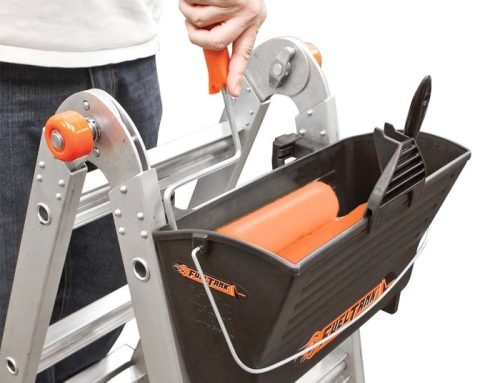We recently
reported on a seizure of counterfeit ladders conducted by Trading Standards
officers at the Port of Felixstowe; 2,000 telescopic ladders were considered
suspicious as they had a CE mark, which is not an approved standard for
ladders. The Test and Research Centre
conducted tests on the ladders to assess their dimensions, build quality and
load bearing ability and found that shockingly, the ladders weren’t able to
even complete the tests, as they were so badly made.
This led to
another joint project to test telescopic ladders being imported at ports, as
well as those being sold in online marketplaces (often at a price too good to
be true). The venture was commissioned
by Suffolk County Council, the Ladder Association and the East of England
Trading Standards Association (EETSA), and directed the Test and Research
Centre to select ladders that were being imported, as well as ones purchased
online in the UK. Two of each model was
purchased, because if a ladder failed a particular test and sustained damage,
the remaining tests could still be completed with the spare model.
The resulting
Telescopic Ladder Surveillance Survey makes for shocking reading. Seventeen ladders were tested against the EN
131:6 standards which apply to the type of telescopic leaning ladder in
question. Eight of these were selected
by EETSA, three were seized at the port and a further six were selected by the
Ladder Association after consulting members as to which telescopic ladders they
suspected were substandard.
Only three
samples passed each test, with two other ladders passing all but one test. Of these two, one was manufactured only a
month after the introduction of EN 131, so it is probable that old design
dimensions were used in a genuine error.
The other failed the strength test due to the clearance beneath the
stiles when the test load was applied – there was no structural failure,
however, so both these ladders would have been conceivably safe to use.
Four of the
ladders failed every single test, or were not able to be fully tested because
both examples had broken in prior tests.
The remaining ladders had a mix of passes and fails on each test (with a
skew towards fails). Thirteen ladders
failed the strength test, eleven of them actually buckling under the test load. Eleven of them also failed the bending test,
while many also failed locking mechanisms tests, showing that in many cases the
ladders were poorly manufactured and designed.
Nine of them were marked with EN 131, showing that there was a clear
intention to mislead customers.
Counterfeit
products are a problem in every industry but when it comes to height access
equipment it is so important that safety standards are adhered to as it is
quite literally a matter of life and death.
The report recommends that ladders are purchased only from reputable
suppliers, such as Midland Ladders, and encourages consumers to look for
product (and company) reviews to ensure they are dealing with a scrupulous
firm. While the model and manufacturer
of the sample ladders has not been revealed, we are confident in our
long-standing agreements with manufacturers, so you can buy from us with peace
of mind.






Leave A Comment
You must be logged in to post a comment.